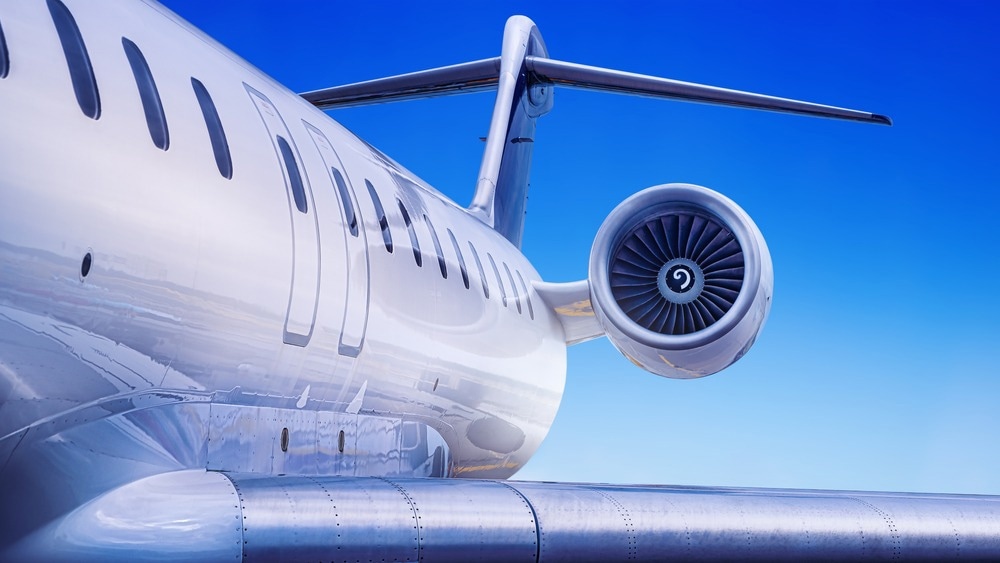What Makes Infrared Sensors Crucial in Aerospace?
Discover the transformative role of infrared sensors, pioneered by W. Herschel, in shaping the aerospace industry. Dive into this article to explore how these pivotal technologies, integral to systems like IRST and EVS, are steering advancements in safety, surveillance, and beyond.

Image Credit: frank_peters/Shutterstock.com
What Are Infrared (IR) Sensors?
Infrared sensors are electronic devices used to detect infrared radiation in the surrounding environment. These sensors can translate this radiation into actionable signals.
Developed in 1800 by W. Herschel, IR sensors are extensively used by NASA in astronomy, for military purposes, and in infrared thermal imaging in the medical industry.
An IR LED and IR photodiode make up the infrared sensor. The LED emits infrared radiations of a particular wavelength, while the photodiode is used for detecting the intensity of IR waves.
Sensors are used within the aerospace industry to ensure safe operations. For example, during flight, sensors monitor different parameters, with infrared sensors being particularly vital—every aerospace vehicle is equipped with them
Thermal Infrared Sensing in the Aerospace Industry
The aerospace industry extensively uses thermal imaging performed by cameras containing thermal infrared sensors. This is crucial for precise analyses of the thermal behavior of aero engines, driven by the strict safety and reliability requirements mandated by aviation authorities.
Additionally, infrared camera systems play a vital role in conducting efficient fault analyses for quality control purposes, such as assessing fuselages, wings, and rotor blades of airplanes or helicopters.
Composites are being used to make aerospace structures lightweight. Ensuring the quality of lightweight composite materials and other construction processes in the aerospace sector demands precise control measures. This is achieved via Active heat flow thermography, using infrared cameras and sensors to find defects and ensure the airworthiness of components.
Infrared Search and Track Technology
The most important technology involving the infrared sensors is the IRST (Infrared Search and Track), which uses infrared sensors for tracking different targets that are present far away.
Its distinctive feature lies in its "passive" nature, implying that it operates without emitting any infrared radiation itself. Referred to as a "see first, strike first" sensor system by the experts at Lockheed Martin, IRST enables fighter aircraft to target potential threats accurately.
Lockheed Martin's latest innovation, the Legion Pod, features its advanced IRST21 sensor system in a podded configuration, allowing seamless operations across various fighter and non-fighter aircraft platforms through plug-and-play operation. The IRST21 within the Legion Pod incorporates block improvements that enhance the capability to engage threats at considerably extended ranges.
What sets the Legion Pod apart is its capacity to simultaneously operate multiple sensors without requiring expensive modifications to the pod or host aircraft.
Infrared Sensors in Uncooled Enhanced Vision Systems (EVS)
The accidents encountered during the operations of the aviation industry are mostly due to poor visibility by fog, rain, and bad weather. Enhanced Vision Systems (EVS) employing short-wave infrared (SWIR) sensors offer pilots an infrared perspective of their surroundings, allowing visibility in darkness and adverse weather conditions.
Incorporating SWIR in Enhanced Vision Systems is particularly crucial for detecting runway lights on landing strips. Typically coupled with long-wave infrared sensors, enhanced vision systems provide a forward view to pilots through head-down or heads-up (HUD) cockpit displays, especially in Synthetic Vision Information Systems.
An Introduction to Northrop Grumman’s Infrared Sensing Systems
Northrop Grumman's uses a special infrared sensing technology equipped with modern electro-optical/infrared (EO/IR) sensors. These special infrared sensors enable the pilot to continuously monitor the airspace to look out for threats and enemies.
These specialized IR sensors are used for accurately monitoring enemy aircraft situated at a long distance. The experts at Northrop Grumman have used Infrared sensors for developing guided missiles with advanced targeting capabilities.
EO/IR technology is central to Northrop Grumman’s infrared countermeasures (IRCM) systems, designed to protect aircraft from infrared-homing missiles. These missiles lock onto heat sources, like aircraft engines, directing the missile toward that heat.
How Are Infrared Sensors Incorporated in Ballistic Missile Defense Systems?
Ballistic Missile Defense System (BMD) consists of Infrared Focal Plane Array (IRFPA) technology. The BMD system uses infrared sensors in conjunction with the IRFPA system for effective functioning.
An article published in Infrared Physics & Technology reveals that the BMD system comprising IRFPA and infrared sensors is used for endo-atmospheric and exo-atmospheric sensing and defense. The endo-atmospheric surveillance systems are used to position targets with higher levels of infrared radiation being emitted from heated windows.
The exo-atmospheric and space-based applications of such systems typically deal with targets whose temperature is much lower than that of the endo-atmospheric applications.
Infrared sensors are necessary for tracking, surveillance, and accurate positioning by aerospace defensive systems. This is confirmed by the decision of the U.S. Space Development Agency (SDA) to reach out to the aerospace sensor industry to design about 4 to 8 satellites with embedded highly efficient infrared sensors to specifically detect hypersonic missiles.
The use of infrared sensors in aerospace applications is expected to rise. With the integration of IoT and Machine Learning, the data collection and analysis capabilities of these sensors will improve significantly, making infrared sensing systems more efficient.
WEBSITE : sensor.sciencefather.com
Nomination Link : https://x-i.me/ra08s
Registration Link : https://x-i.me/rs21p
contact as : sensor@sciencefather.com
SOCIAL MEDIA
Twitter :https://x.com/sciencefather2
Blogger : https://x-i.me/b10s
Pinterest : https://in.pinterest.com/business/hub/
Linkedin : https://www.linkedin.com/feed/
#sciencefather #researchawards #InfraredSensors, #AerospaceTechnology, #SensorInnovation, #AerospaceEngineering, #InfraredTechnology, #AerospaceSensors, #FlightSafety, #AerospaceApplications, #AdvancedSensors, #InfraredImaging, #AerospaceResearch, #SensorTechnology #Professor, #Lecturer, #Scientist, #Scholar, #Researcher, #Analyst, #Engineer, #Technician, #Coordinator, #Specialist, #Writer, #Assistant, #Associate, #Biologist, #Chemist, #Physicist, #Statistician, #DataScientist, #Consultant, #Coordinator, #ResearchScientist, #SeniorScientist, #JuniorScientist, #PostdoctoralResearcher, #LabTechnician, #ResearchCoordinator, #PrincipalInvestigator, #ClinicalResearchCoordinator, #GrantWriter, #R&DManager, #PolicyAnalyst, #TechnicalWriter, #MarketResearchAnalyst, #EnvironmentalScientist, #SocialScientist, #EconomicResearcher, #PublicHealthResearcher, #Anthropologist, #Ecologist, #Geologist, #MaterialsScientist, #VisitingResearcher, #ScienceCommunicator, #ClinicalResearchAssociate, #RegulatoryAffairsSpecialist, #ResearchFellow, #DataAnalyst, #LaboratoryManager, #PharmaceuticalResearcher, #BiomedicalScientist, #Neuroscientist, #Geneticist, #Biostatistician, #Bioethicist, #Microbiologist, #Immunologist, #Oncologist, #Epidemiologist, #Toxicologist, #Virologist, #Zoologist, #Botanist, #MarineBiologist,
.jpg)
Comments
Post a Comment